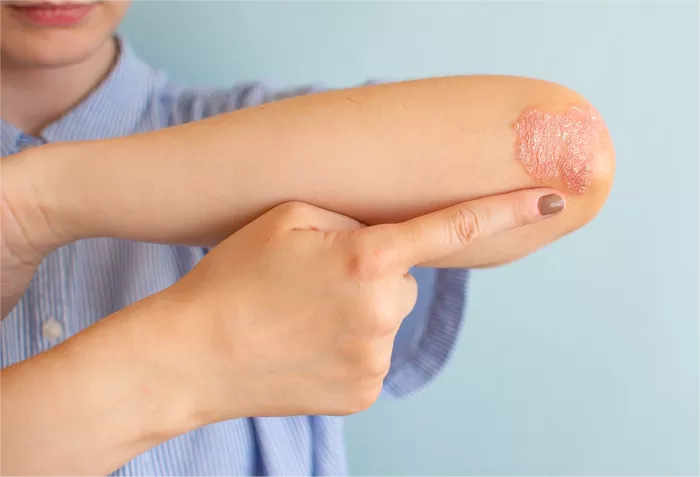Vitiligo is a dermatological condition characterized by the loss of skin pigment, resulting in white patches on the skin. While the physical manifestations of vitiligo are well-documented, the symptom of itching associated with this condition remains a topic of interest and investigation within the medical community. Itching, or pruritus, is a sensation commonly experienced in various skin disorders, and its presence in vitiligo raises questions about underlying mechanisms and potential implications for patients. In this article, we delve into the relationship between vitiligo and itching, exploring the current understanding, possible causes, and management strategies.
The Nature of Vitiligo: A Brief Overview
Vitiligo affects approximately 1% of the world’s population, regardless of age, gender, or ethnicity. The condition is characterized by the destruction of melanocytes, the pigment-producing cells in the skin. This loss of pigment leads to the development of depigmented patches, which can appear anywhere on the body but commonly affect areas exposed to sunlight, such as the face, hands, arms, feet, and genital areas.
The precise cause of vitiligo remains unclear, although it is widely believed to involve a combination of genetic, autoimmune, and environmental factors. Autoimmunity, in particular, is thought to play a significant role, where the body’s immune system mistakenly targets and destroys melanocytes.
Itching in Vitiligo: Exploring the Phenomenon
Itching, or pruritus, is a sensation that often accompanies various skin conditions, including eczema, psoriasis, and dermatitis. Similarly, many individuals with vitiligo report experiencing itching within or around depigmented patches. The presence of itching in vitiligo has sparked interest among researchers and clinicians seeking to understand its underlying causes and significance.
Possible Causes of Itching in Vitiligo
The exact reasons behind itching in vitiligo are not definitively established. However, several theories have been proposed:
1. Skin Dryness and Barrier Dysfunction: Depigmented areas in vitiligo may be more prone to dryness and impaired skin barrier function. Dry skin is a known trigger for itching in various dermatological conditions.
2. Neural Changes: Alterations in nerve fibers within or around depigmented patches could contribute to abnormal sensory signals, leading to itching.
3. Inflammatory Processes: Inflammation is a hallmark of autoimmune conditions like vitiligo. Localized inflammation within or around depigmented areas may stimulate itch receptors.
4. Psychological Factors: The psychological impact of vitiligo, including stress and anxiety, can exacerbate sensations like itching through complex mind-body interactions.
Clinical Studies and Patient Reports
Research exploring the relationship between vitiligo and itching is ongoing. Some studies have reported a higher prevalence of itching among individuals with vitiligo compared to the general population. For example, a study published in the Journal of the European Academy of Dermatology and Venereology found that pruritus was more commonly reported by vitiligo patients than by controls. However, further investigation is needed to elucidate the specific mechanisms at play.
Management and Treatment
Managing itching in vitiligo involves a multifaceted approach that addresses both the underlying condition and the symptom itself:
1. Emollients and Moisturizers: Regular application of moisturizing creams or emollients can help alleviate dryness and soothe irritated skin.
2. Topical Corticosteroids: These medications can reduce inflammation and alleviate itching when applied to affected areas. However, long-term use should be monitored due to potential side effects.
3. Antihistamines: Oral antihistamines may provide relief by blocking histamine receptors involved in itch sensation.
4. Stress Management: Techniques such as mindfulness, meditation, or counseling can help reduce stress and anxiety, which may in turn alleviate itching.
5. Avoiding Triggers: Identifying and avoiding potential triggers such as certain fabrics, harsh soaps, or extreme temperatures can help minimize itching episodes.
Future Directions and Conclusion
Despite advances in understanding vitiligo, the relationship between itching and this condition remains complex and not fully elucidated. Further research is needed to uncover the specific mechanisms underlying pruritus in vitiligo and to develop targeted treatments that address both the skin depigmentation and associated symptoms effectively.
In conclusion, itching can be a bothersome symptom for individuals with vitiligo, impacting their quality of life and adding to the challenges posed by this condition. By acknowledging and investigating the phenomenon of itching in vitiligo, we move closer to providing comprehensive care and support for those affected, ultimately improving outcomes and well-being.
Related Topics:

























